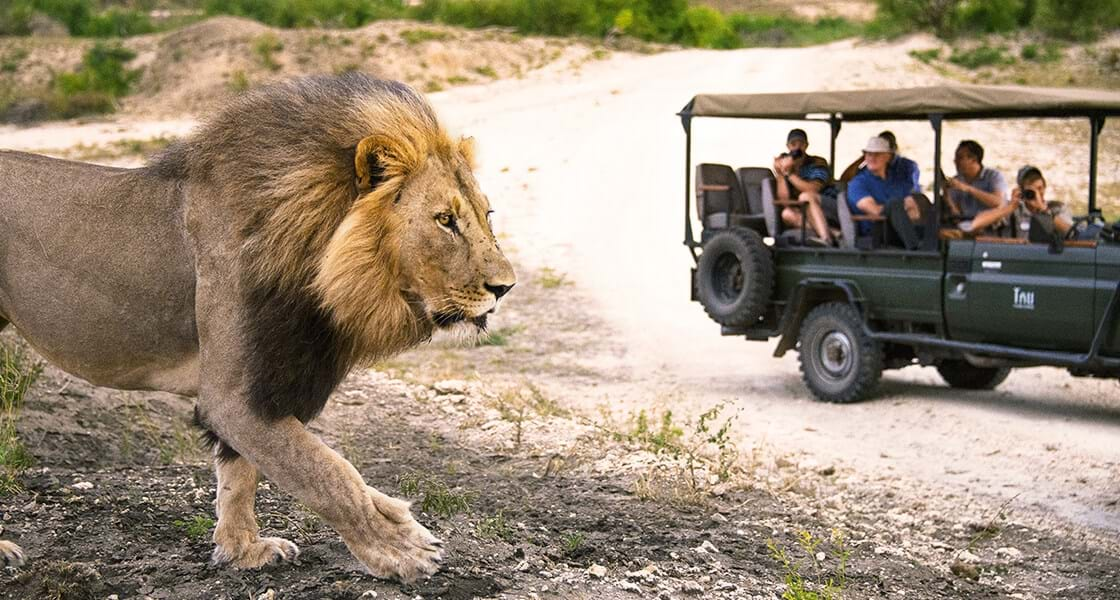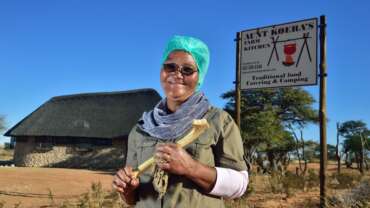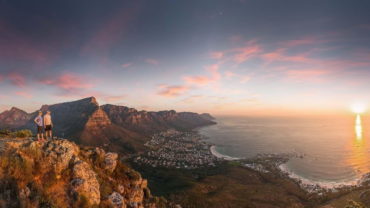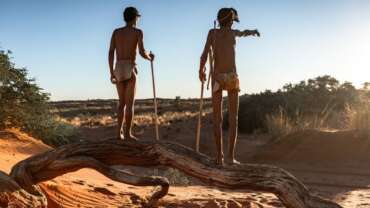The Kruger National Park – a safari destination that can’t be missed
When you think of South Africa, the incredible Kruger National Park most certainly comes to mind. Not only can you catch a glimpse of the famous Big Five, but you will find yourself surrounded by hundreds of species of birds, ancient trees, winding rivers, superb accommodation and adventure. Basically, it’s a one-stop shop for all of your wildlife dreams.
Imagine rising with the South African sun. Driving out of your camp, filled with anticipation as you keep your eyes peeled for an overnight lion kill, a leopard casually draped over the branch of a big tree or a herd of elephants taking a morning stroll. Then ask yourself, is there anywhere else in the world you’d rather be?
The Kruger National Park is home to thousands of animals. From giraffes browsing for Acacia leaves to chew on and a herd of buffalo crossing the road right in front of you, to elusive big cats enjoying a spot of shade and fish eagles letting out their distinctive call – it’s the Lion King in live action.
It’s hard to believe your eyes when you see the herds of hundreds of antelope or crocodiles basking in the afternoon sun while the hippos keep cool under water. Not to mention the things you’ll hear, they are just as unbelievable – hyenas cackling the night away as male lions roar for dominance, and if you’re lucky, the almost silent footsteps of a pack of wild dogs on the prowl.
This is just a small taste of all the things you can see, hear and do in one of the world’s most-loved game parks. The Kruger National Park enjoys a great year-round sunny climate and offers all kinds of activities, from guided game drives and bush walks with an armed ranger to three-night walking trails in deep wilderness areas.
With so much to see and do, it’s hardly surprising that the Kruger National Park gets over 1.4 million visitors a year. However, because it’s so big – 352km from north to south, and covering over 1.9 million hectares with 2500km of tar and dirt roads – you will be amazed at how often you find yourself being treated to a private sighting. Don’t be fooled though, with so many expertly-camouflaged animals calling the park home, you’re never really alone.
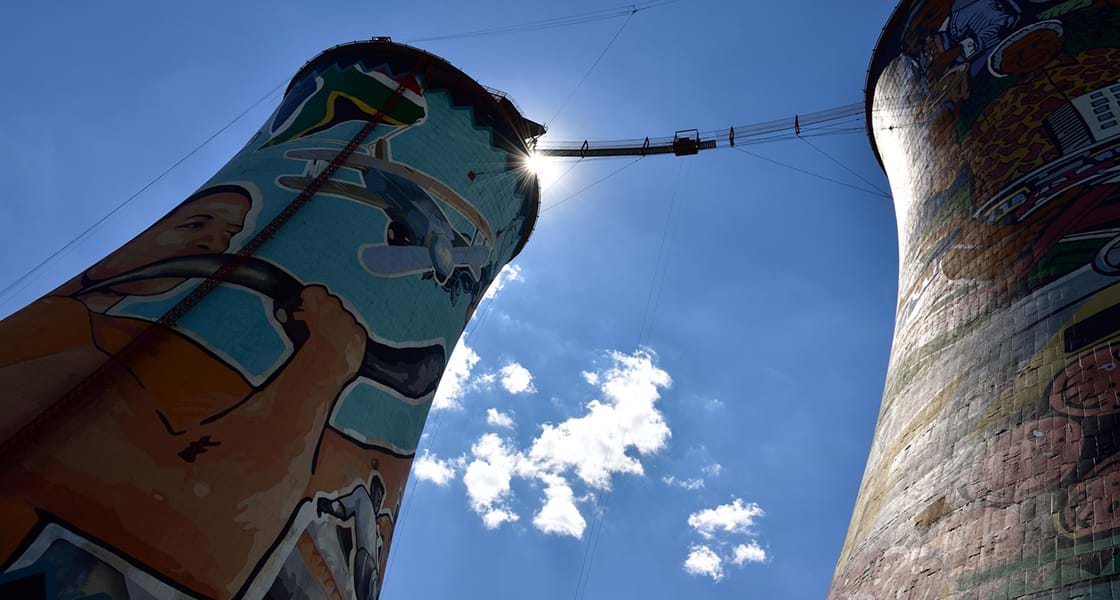
Add some adventure to your township tour at the Orlando Towers
The Orlando Towers bungee in Soweto adds a whole new dimension to sightseeing in this famous Johannesburg township. Bridging the gap between adventure and township tourism, you can enjoy one of Johannesburg’s most vibrant landmarks like never before. With a 100m drop to the ground, bungee jump, swing or free fall your way to the bottom.
This is definitely one of the most exciting ways to see South Africa’s biggest and most famous townships. Based around the Orlando Towers, part of the old Orlando Power Station and a major Soweto attraction, outdoor adventure activities are fast changing the way visitors experience this already vibrant place.
For starters, you now have the most awesome view of Soweto from the top of the towers. Then, of course, there’s the adrenaline rush; never before could you enjoy such heart-pumping adventures in a genuine township setting.
A Soweto adventure experience includes the bungee jump, a tower swing (the world’s first between two cooling towers), an internal tower swing and base jumping, all off the top of the west tower, some 100m up.
Once you’re secured in your harness, an open-air lift transports you along the outside of the tower to a platform, three metres from the top. A quick walk along the floating staircase takes you to the tower’s rim and to either the sky-bridge (between the two towers) for the bungee or the platform for the swing.
And then…you jump! The Soweto Bungee Jump sees you falling 33 storeys down, and the Power Swing offers a 40m freefall before the swing cables kick in. The ominously named Abyss, another world-first, is similar to the Power Swing but sees you jumping inside the tower, swinging across the width of its base. There’s also a viewing platform for the slightly less adventurous.
Once you’re secured in your harness, an open-air lift transports you along the outside of the tower to a platform, three metres from the top. A quick walk along the floating staircase takes you to the tower’s rim and to either the sky-bridge (between the two towers) for the bungee or the platform for the swing.
And then…you jump! The Soweto Bungee Jump sees you falling 33 storeys down, and the Power Swing offers a 40m freefall before the swing cables kick in. The ominously named Abyss, another world-first, is similar to the Power Swing but sees you jumping inside the tower, swinging across the width of its base. There’s also a viewing platform for the slightly less adventurous.
The Orlando Towers played a significant role in Soweto’s history. To mark this, the west tower has been painted to reflect the famous sons and daughters of Soweto as well as traditional township scenes. It’s believed to be the biggest mural in South Africa and adds a creative edge to this historic landmark while providing a great backdrop to your plunge to the bottom.
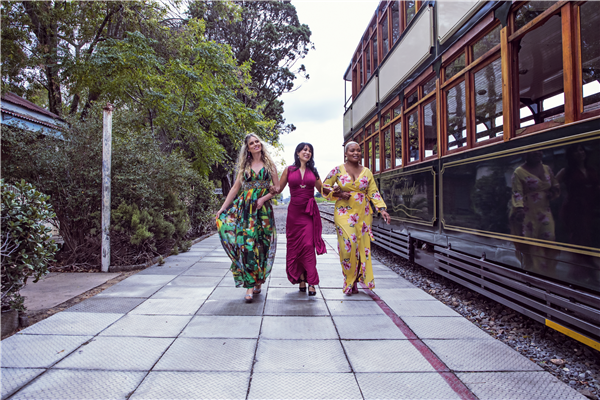
Weddings in South Africa: unsurpassed natural beauty and warm hospitality guaranteed
Weddings in South Africa give brides and grooms a wealth of choices when it comes to that perfect event. For starters, there are many different locations to choose from – the bush, the beach, the mountains, the desert or a simple farm in the middle of nowhere.
And in South Africa, weddings are certainly not run-of-the-mill: the choice of venues is as vast and varied as the number of locations, and the local hospitality industry provides top-class service to suit any budget.
The South African wedding industry is booming, and many visitors to South Africa take advantage of local talent, exquisite venues and gorgeous settings to start their lives together. Each province has something different to offer the couple looking for a unique wedding experience.
One popular wedding destination is the Cape Winelands, and nuptials at wine estates in Stellenbosch, Constantia and Franschhoek are always a combination of beautiful settings and world-class food and wine.
In Gauteng, there’s a great choice of ‘farm wedding’ venues in the Muldersdrift region, close to the Cradle of Humankind.
In Mpumalanga and Limpopo provinces, you have the option of perfect bush weddings, while in Northern Cape enormous skies and striking arid landscapes make the ideal backdrop for couples seeking a wedding with a sense of adventure – and spring weddings here (from August to October) sees Mother Nature herself taking care of the flower arrangements, when Namaqualand is carpeted with blooms.
For glitz and glamour, Sun City in North West province makes sense, as the golf course, water park and other attractions at this world-famous resort will keep guests entertained in the run-up to the big day. In the Eastern Cape, some of the country’s best beaches are part of the offering, as well as some great bushveld reserves.
For couples who want to get hitched in Free State, there are quaint towns like Clarens, Ficksburg and Parys, where welcoming home-grown hospitality is part of the deal.
In KwaZulu-Natal, there’s the option of a bush wedding, an oceanside wedding, a wedding in the mountains or even a traditional Zulu wedding.
Whatever your needs or dreams are for that special day, South Africa is a choice wedding destination.

Greenside, Johannesburg: leafy, outdoorsy suburbia and great restaurants in Gauteng
Greenside in Johannesburg doesn’t boast the stately homes of nearby Parktown North, nor the revamped trendy cottages of adjacent Parkhurst. But it does offer some of the best restaurants to be found in the city, outdoor activities at several nearby locations, and plenty of décor and lifestyle shopping.
Although it was once part of the Afrikaans farm Braamfontein, the suburb’s name refers to the adjacent suburb of Parkview to the east and its famous golf course. Parkview Golf Club was established in 1916, largely due to the efforts of a Scottish immigrant called LB Waters, who won the inaugural South African Open in 1903 and went on to win it 3 more times.
It is perhaps because of Waters’ influence that so many of Greenside’s leafy streets are named after Scottish golfers or golf courses, such as Gleneagles, Braeside, Mowbray and Greenway.
Parkview enjoys the reputation of being one of the friendliest golf clubs in Gauteng, and the course is known for its superb fairways and greens – and its constant water hazards, thanks to the stream alongside which almost all its links were built. The internationally famous golfer Bobby Locke became a member of Parkview Golf Club after winning both the SA Amateur and the SA Open here in 1935.
Greenside is also home to Pirates Rugby Club, Johannesburg’s oldest rugby club, with a rich history and dedicated members who focus on both the professional and social aspect of the sport. Many overseas players earned their stripes here.
Greenside’s core shopping route runs along Greenway and Gleneagles Road, where interior design stores rub shoulders with art colleges, pavement cafés and Paco, arguably the best carpet shop in the city.
Just down the hill west of Greenside is Emmarentia Dam, one of Johannesburg’s most loved stretches of water. Together with the neighbouring Johannesburg Botanical Gardens, the gardens stretch over 81 hectares.
Walk along beside the dam in the early morning or evening and watch canoeists, kayakers and anglers, while small yachts skid across the surface. There are always people on the banks indulging in our favourite outdoor pastime – the great South African braai.
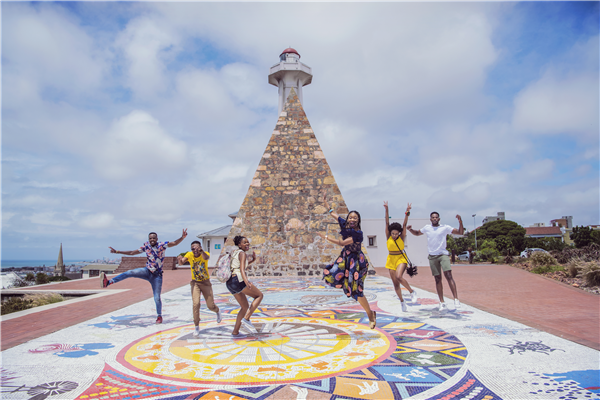
Port Elizabeth to Grahamstown/Makhanda: drive ‘the Wildlife Route’ through frontier history
Take a slow ride through ‘frontier country’ in the heart of Eastern Cape province, from Port Elizabeth in the Nelson Mandela Bay Metropolitan Municipality to Grahamstown/Makhanda, and you will travel from exquisite dune fields, to a sunset gathering of elephants, to a feast in an olive grove outside an old Victorian railway village.
If you’re in a hurry to get from Port Elizabeth to Grahamstown/Makhanda – called ‘frontier country’ because the area was literally the hotly contested frontier between European settlers and the indigenous Xhosa people for more than a century – you could get there in under 90 minutes. After all, the drive along the N2 is a mere 130km.
But let’s say you’re interested in the wildlife offerings of Eastern Cape, long lunches in olive groves, farm stalls offering all sorts of delicious delights, golden coastal dunes, and a round of golf in a little Victorian village in the mountains.
If any of the above catch your fancy, then the slow road between Port Elizabeth and Grahamstown/Makhanda beckons: ‘the Wildlife Route’. But be warned: you might want to set aside a few days for this journey.
The first day is all about the Greater Addo Route, beginning at Colchester, a little town on the banks of the Sundays River. At sunset the massive dunes in the area glow gold. More than 200 species of birds, some small antelope and suricates like mongooses and meerkats call these dunes home.
Less than 15km north of Colchester, stop over at Nanaga Farm Stall for one of its legendary pies, along with a supply of pickles, cheeses, wine and breads to enjoy over the coming days.
Back on track, head to the Addo Elephant National Park, to book in at a chalet for the night. Drop your luggage, grab your camera bags and head off immediately for a late afternoon drive to the Hapoor Dam.
Elephants – scores of them – come to drink at the dam. You can sit and watch them in the evening light, as they splash water on themselves and each other, nudge their young to the fore and carry on like one big, happy family, completely oblivious to human watchers. Hapoor Dam is almost always an incredible elephant experience.
After an early morning game drive and a quick breakfast, you can leave the park and head back through Paterson, turning right to the village of Alicedale.
Pop in at Bushman Sands Country Estate for a quick round of golf on this Gary Player course – with its great views of the area’s hills and thickets.
For lunch, you might want to arrange a tour of the Springvale Olive Estate, just outside Alicedale.
First, you’ll tour the olive-processing facilities. Then you can buy some the naturally fermented olive products on sale and combine them with what’s left of your food haul from Nanaga, before sitting down to a memorable picnic among the groves. Burp.
Sleep over at the nearby Shamwari Game Reserve. If you who have the time, you might want to book a 2-day walking experience with the Shamwari Explorer Camp – in which you go on guided walks for about 4 hours a day and sleep in a mobile tented camp. This is probably the best way to learn about the bush, the birds and the history of the area.
After Shamwari, make the short 45km drive to Grahamstown/Makhanda, where you’ll find all manner of cultural, historical and literary encounters. See you on the road…
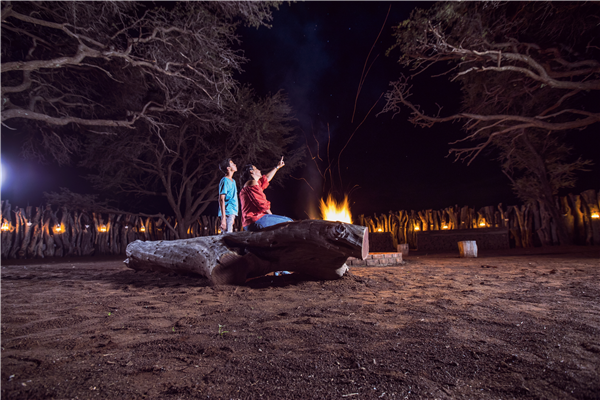
The Richtersveld World Heritage Site: conserving a botanical treasure in Northern Cape
The Richtersveld World Heritage Site is massive, sprawling over 162 000 hectares – but there are times when you can hardly move a metre without reaching for your camera.
A tiny pelargonium in a little hollow, a group of indomitable yellow flowers, a few weirdly shaped butter trees, luminous pink mesembs or a sudden burst of yellow oxalis – all demand to be photographed when they bloom exuberantly in spring.
Strange little plants will intrigue you: leaves that look like coins, or stems; plants that move your soul because despite the harsh climate they seem so courageous, tenacious and carefree.
Shepherd’s trees frame the view. You may find the famous plant called the ‘halfmens’ (half-human) with its frilly mop of leaves on top, some with a spiky furze of red flowers in spring – always bending to the north.
Over it all is the buzzing of pollinators, and the plaintive call of birds, against a backdrop of majestic mountains that seem to change colour all the time.
Every now and then, you’ll come across friendly nomadic farmers with goats and sheep. This tradition of moving herds to different seasonal grazing grounds, called transhumance, is centuries old, and is considered a more sustainable way to farm livestock in arid areas.
This is the Richtersveld Community Conservancy, and it has so much to recommend it in terms of human traditions and plant life, that it became World Heritage Site in 2007, based on both its cultural and botanical importance.
But the path towards this recognition started with theft.
In the 1990s, the Richtersvelders started to see more tourists coming to visit their remote piece of flower-rich desert.
But they were troubled to see some going offroad into sensitive areas. There were even more perturbed when a few vehicles were seen carrying out loads of indigenous plants.
The destruction alerted the Richtersvelders to how precious and vulnerable their botanical heritage was. In 1997 and 1998, plans for a community conservancy were slowly drawn up. It gave the community control and management options.
Every Richtersveld stakeholder had input – farmers, tourism hosts, provincial and municipal authorities, South African National Parks, small diamond miners, and the councils and representatives from every town.
Turning this 162 000-hectare community conservancy into a World Heritage Site put the crown on a massive conservation effort, and today, the Richtersveld’s glorious ecosystem is protected to delight future generations.
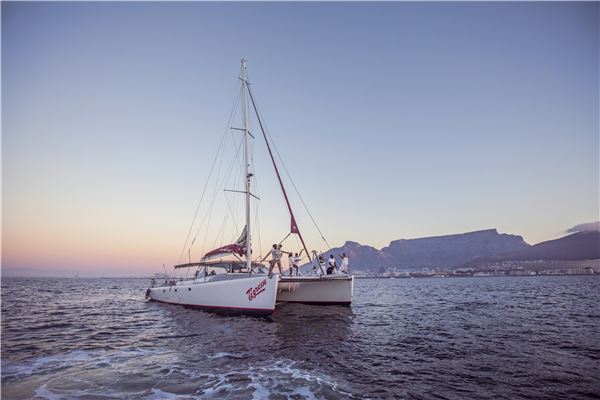
Western Cape highlights
From beautiful beaches to exquisite scenery and exploring the ways of the early Khoisan, the Western Cape has a lot more to offer incentive tourists than just Cape Town and the winelands. The Garden Route offers beaches, lakes, lagoons and forests, golf estates, sea sports and cultural attractions.
Table Mountain
Cape Town’s Table Mountain is the dramatic backdrop to one of the world’s top destinations. A sunset dinner on the top of Table Mountain is hard to beat, with a panoramic 360-degree view of the city and the rugged Cape Peninsula.
Table Mountain also provides numerous trails for walking and hiking and, for the more adventurous, there is rock climbing or paragliding.
The mountain is accessible via a high-tech rotating cable car or by various hiking routes. Along the way you can enjoy the species of plant life and the scenery which makes the Table Mountain National Park part of the Western Cape’s Floral Kingdom – 1 of South Africa’s 8 UNESCO World Heritage Sites.
Robben Island and Historic Attractions
Situated some 12 km from Cape Town harbour, Robben Island is the notorious prison where Nelson Mandela was incarcerated for 18 of his 27 years in jail. You can visit the prison and tour the island and pay homage to the great struggle heroes of the past.
Other notable historic attractions in Cape Town include the District Six Museum, which highlights forced removals under the apartheid regime; the Bo-Kaap Museum – a tribute to the Cape Malay culture; and the Castle of Good Hope, the oldest surviving colonial building in Africa.
The Whale Coast
The Sensational Whale Coast stretches from the hamlet of Rooiels in the west to Quoin Point in the east and is flanked by ocean and mountain views. A major highlight is the sighting of the southern right whales that takes place between June and November.
If you’re visiting us at the end of September, don’t miss the Whale Festival that takes place annually in Hermanus.
The Cape Winelands
While the verdant valleys of the Cape Winelands can be reached on a day-trip from Cape Town, they are also a wonderful location for a longer getaway.
This is an area of majestic mountains, spectacular passes, the historic towns of Stellenbosch, Paarl and Franschoek, and gracious Cape Dutch wine estates dating back to the 17th century.
There are 13 wine routes in the Western Cape with over 2 000 varieties of wine to taste. Enjoy one of the many superb restaurants located at some of the country’s finest estates and, if you’re in the mood for something different, you can tread grapes and blend your own wine (great for team-building).
The Klein Karoo and Central Karoo
Don’t be fooled by the dryness of the Klein Karoo and Central Karoo – under these infinite skies there’s much archaeology, wildlife, architecture and some of the most impressive mountain passes. The Cango Caves outside Oudtshoorn drip with stalagtites and stalagmites, while the ostrich palaces located on farms have retained their yesteryear elegance.
Vin de Constance
In the early 19th century the wine of Constantia reached the height of its fame. Kings vied for possession of it; Louis Philippe sent emissaries from France to fetch it; and Napoleon drank it on the island of St Helena, finding solace in his lonely exile.
Make sure to visit Groot Constantia, the oldest wine-producing farm in South Africa and one of the prettiest.
The Garden Route
Up the south-east coast runs the aptly named Garden Route, incorporating Mossel Bay, Sedgefield, George, Wilderness, Plettenberg Bay and Knysna.
It’s a veritable Eden, edge-to edge in beaches, lakes, lagoons and forests, mixed with magnificent golf estates and cultural attractions and sprinkled liberally with thrills like bungee jumping, deep-sea fishing and sea kayaking.
You’ll find the Outeniqua Hiking Trail, The Otter Trail and the Dolphin Trail in the lush Garden Route National Park and, if you’re in the mood for adventure, why not jump off the highest commercial bungee jump in the world?
You can enjoy ocean encounters and ecological adventures at Plettenberg Bay with miles of sparkling beaches set next to the green swathes of polo fields. Here you can view bottlenose and the rare Indo-Pacific humpback dolphins, as well as some shark species.
From Arch Rock you head into the middle of the Bay where pelagic seabirds are normally to be found some 7km from the shore. Out there our resident Bryde’s whales may be seen, as well as common dolphins, or southern right and humpback whales in season.
The West Coast
On the West Coast, walk the pathways of the early Khoisan, who left their signatures in hundreds of rock paintings, particularly in the rugged Cederberg mountain range. At the West Coast Fossil Park (a 90-minute drive from Cape Town) there’s a rich find of animal fossils.
About mid-year, depending on the rains, the region breaks into a field of daisies, proteas and shrubs as the flower season starts. Also remember, the West Coast is renowned for exquisite seafood including prawns, crayfish and calamari.
Western Cape highlights at a glance:
– Cape Town’s Long Street for after-hours fun
– Table Mountain (either by aerial cableway or on foot)
– Superb beaches – Clifton, Camps Bay, Muizenberg, Boulders
– Robben Island – a UNESCO World Heritage Site
– The Cape winelands for a wine-tasting safari
– Whale watching in the Overberg
– The West Coast National Park
– The Garden Route – spectacular natural beauty
– The V&A Waterfront – shop until you drop



